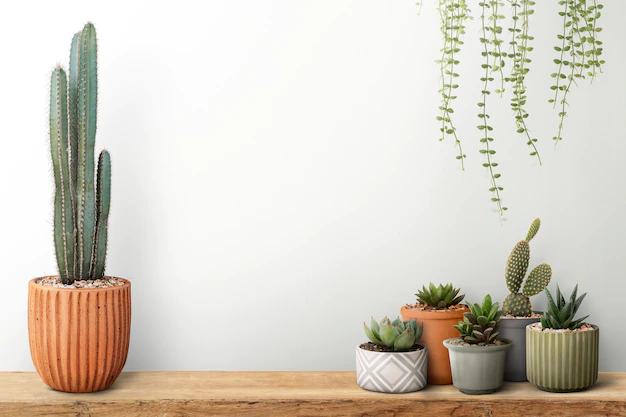Source – Freepik
Top 10 most Bizarre and intriguing cactus plants !
“Welcome to my blog, where we delve into the extraordinary world of cactus plants! Get ready to be amazed as we uncover the top 10 most bizarre and intriguing cactus varieties that you’ve likely never seen before!”
- Introduction
- Moon Cactus (Gymnocalycium mihanovichii)
- Old Man Cactus (Cephalocereus senilis)
- Peanut Cactus (Echinopsis chamaecereus)
- Bishop’s Cap (Astrophytum ornatum)
- Star Cactus (Astrophytum asterias)
- Christmas Cactus (Schlumbergera)
- Dragon Fruit Cactus (Hylocereus undatus)
- Golden Barrel Cactus (Echinocactus grusonii)
- Devil’s Head Cactus (Echinocactus horizonthalonius)
- Peruvian Apple Cactus (Cereus repandus)
- Conclusion
- FAQs
Introduction
Cactus Plants are fascinating plants that have captured the imaginations of nature enthusiasts and collectors alike. With their unique shapes, ability to thrive in harsh conditions, and striking beauty, it’s no wonder they have become popular additions to gardens and households around the world. In this blog post, we will explore ten of the most bizarre and intriguing cactus plants that you probably have never seen before. From otherworldly shapes to impressive adaptations, these cacti are sure to leave you amazed.
1.
Moon Cactus (Gymnocalycium mihanovichii)
The Moon Cactus is an eye-catching cactus with a mesmerizing appearance. Its vibrant colors, which include vivid pinks, oranges, and yellows, make it a favorite among collectors. Interestingly, the Moon Cactus is a grafted cactus, which means it is two cacti in one. The colorful top cactus, known as the “moon,” is grafted onto a rootstock cactus, which provides it with essential nutrients. This unique combination creates a stunning display that is truly out of this world.
10.
Peruvian Apple Cactus (Cereus repandus)

source – Etsy
The Peruvian Apple Cactus is a majestic cactus native to South America. It is known for its towering height and impressive stature, often reaching heights of over 30 feet. The cactus produces large, sweet fruits that are enjoyed by both humans and wildlife. Due to its size and stunning appearance, the Peruvian Apple Cactus makes a bold statement in any landscape.
RELATED ARTICLES
Conclusion
Cacti are a diverse and fascinating group of plants, and the ones mentioned above are just a small glimpse into their unique world. From the otherworldly Moon Cactus to the majestic Peruvian Apple Cactus, each one has its own charm and appeal. Adding these bizarre and intriguing cactus plants to your collection or garden will not only enrich your surroundings but also provide you with a deeper appreciation for the wonders of the natural world.
Can I grow these cacti indoors? Yes, many of the cacti mentioned in this article can be grown indoors if provided with adequate light and care.
Do cacti require a lot of water? Cacti are adjusted to bone-dry conditions and have low water necessities. Overwatering can be detrimental to their health.
Are all cacti spiky? While most cacti have spines for protection, some varieties, like the Christmas Cactus, have softer stems without spines.
Where can I buy these rare cacti? Specialized nurseries and online plant shops often carry a selection of rare cacti for collectors.
How often should I fertilize cacti? Cacti generally do not require frequent fertilization. During the growing season, a balanced fertilizer can be applied sparingly.
What type of soil is best for cacti? Well-draining soil with a mix of sand, perlite, and potting mix is ideal for cacti to prevent waterlogged roots.
Do these cacti require full sunlight? Most cacti thrive in bright sunlight, but some species, like the Christmas Cactus, prefer indirect light.
Can I propagate these cacti at home? Yes, many cacti can be easily propagated through seeds or cuttings with the right care and conditions.
Do these cacti have any medicinal uses? Some cacti species have traditional medicinal uses, but it is essential to seek professional advice before using them.
Are these cacti endangered? While some cacti are endangered in their native habitats due to habitat loss and illegal collection, cultivating them responsibly can help preserve their populations.













